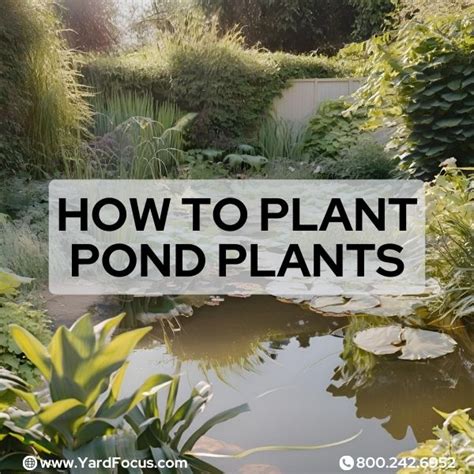How to Plant Pond Plants Correctly: Avoid Common Mistakes
Creating a thriving aquatic ecosystem in your pond requires more than just tossing in some plants. Planting pond plants correctly is crucial for their survival and for the overall health of your pond. Improper planting can lead to plant death, nutrient imbalances, and even algae blooms. This comprehensive guide will walk you through the process, highlighting common mistakes to avoid.
Understanding Pond Plant Types
Before diving into planting techniques, it's essential to understand the different types of pond plants and their specific needs. These broadly fall into three categories:
- Oxygenating Plants: These submerged plants, like Hornwort and Elodea, are vital for maintaining water quality. They release oxygen and absorb excess nutrients, preventing algae growth.
- Marginal Plants: These plants, such as Irises and Water Lilies, thrive in shallow water at the pond's edge. Their roots are submerged, while their leaves and flowers extend above the water's surface.
- Floating Plants: These plants, including Water Hyacinth and Duckweed, float freely on the water's surface. They provide shade, which helps control algae, but their rapid growth can become problematic if left unchecked.
Choosing the Right Planting Method
The best planting method depends on the type of plant. Here's a breakdown:
-
Oxygenating Plants: These are often bundled and simply placed within the pond. No special planting is usually required; their roots will readily establish themselves in the pond's substrate.
-
Marginal Plants: These need to be planted in containers or directly into the pond's edge, in soil that remains moist but not waterlogged. Containers provide easy access for maintenance and prevent the plants from becoming invasive.
-
Floating Plants: These require no planting at all; simply place them on the water's surface. However, monitor their growth closely as they can quickly cover the pond's surface.
Common Mistakes to Avoid When Planting Pond Plants
Several common mistakes can significantly impact your pond's health and the survival of your plants. Let's address them:
1. Using the Wrong Soil
What's the mistake? Using garden soil or potting mix can cloud the water and lead to nutrient imbalances. These soils contain organic matter that decomposes, depleting oxygen and contributing to algae blooms.
How to fix it: Use aquatic soil specifically designed for pond plants. This soil is typically inert and will not negatively impact your water quality.
2. Planting Too Deep or Too Shallow
What's the mistake? Planting marginal plants too deep will suffocate their roots. Planting them too shallow will expose them to drying out.
How to fix it: Research the specific planting depth requirements for each plant species. Use containers or baskets to control planting depth, especially for marginal plants.
3. Overcrowding Plants
What's the mistake? Overcrowding creates competition for nutrients and light, leading to stunted growth and potentially plant death.
How to fix it: Allow adequate spacing between plants, based on their mature size. Follow the plant's suggested spacing recommendations.
4. Neglecting Plant Maintenance
What's the mistake? Ignoring plant maintenance can lead to overgrown plants, nutrient imbalances, and reduced water clarity.
How to fix it: Regularly inspect your plants for signs of disease or pests. Remove dead or decaying leaves and trim overgrown plants as needed. Thin out plants if they become overcrowded.
5. Not Considering Water Depth and Sunlight
What's the mistake? Planting plants that require deep water in shallow areas, or vice-versa, will result in plant failure. Similarly, neglecting sun exposure requirements will negatively affect plant health.
How to fix it: Carefully assess the sun exposure and water depth of your pond before choosing which plants to include. Match plant species to the conditions your pond provides.
What type of pond plants are best for beginners?
Many hardy and relatively low-maintenance plants are ideal for beginners. These often include oxygenating plants like Hornwort and Anacharis, as they require minimal care. Marginal plants like Irises and certain types of sedges also offer a good balance of attractiveness and ease of care. Avoid overly delicate or fast-growing plants until you gain more experience.
How often should I fertilize my pond plants?
The need for fertilization depends on the type of soil used and the nutrient levels in the water. Aquatic plants usually don't require much additional fertilizer, and over-fertilizing can lead to algae blooms. If your plants exhibit signs of nutrient deficiency (e.g., yellowing leaves), you can use a slow-release aquatic fertilizer specifically designed for pond plants. Always follow the manufacturer's instructions carefully.
By following these guidelines and avoiding these common mistakes, you can create a vibrant and healthy aquatic environment that thrives for years to come. Remember that patience and observation are key to successful pond planting.

